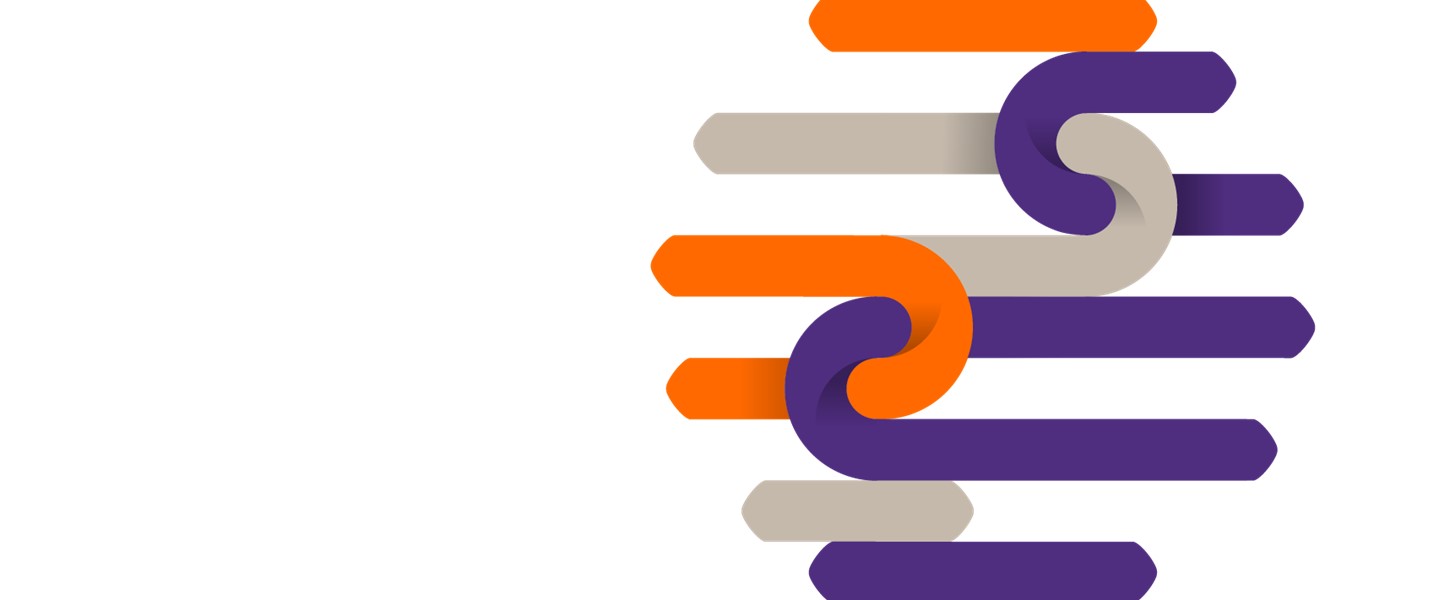-
Internal audit
In today's increasingly competitive and regulated market place, organisations - both public and private - must demonstrate that they have adequate controls and safeguards in place. The availability of qualified internal audit resources is a common challenge for many organisations.
-
IFRS
At Grant Thornton, our International Financial Reporting Standards (IFRS) advisers can help you navigate the complexity of financial reporting so you can focus your time and effort on running your business.
-
Audit quality monitoring
Having a robust process of quality control is one of the most effective ways to guarantee we deliver high-quality services to our clients.
-
Global audit technology
We apply our global audit methodology through an integrated set of software tools known as the Voyager suite.
-
Looking for permanent staff
Grant Thornton's executive recruitment is the real executive search and headhunting firms in Thailand.
-
Looking for interim executives
Interim executives are fixed-term-contract employees. Grant Thornton's specialist Executive Recruitment team can help you meet your interim executive needs
-
Looking for permanent or interim job
You may be in another job already but are willing to consider a career move should the right position at the right company become available. Or you may not be working at the moment and would like to hear from us when a relevant job comes up.
-
Practice areas
We provide retained recruitment services to multinational, Thai and Japanese organisations that are looking to fill management positions and senior level roles in Thailand.
-
Submit your resume
Executive recruitment portal
-
Update your resume
Executive recruitment portal
-
Available positions
Available positions for executive recruitment portal
-
General intelligence assessments
The Applied Reasoning Test (ART) is a general intelligence assessment that enables you to assess the level of verbal, numerical reasoning and problem solving capabilities of job candidates in a reliable and job-related manner.
-
Candidate background checks
We provide background checks and employee screening services to help our clients keep their organisation safe and profitable by protecting against the numerous pitfalls caused by unqualified, unethical, dangerous or criminal employees.

-
Capital markets
If you’re buying or selling financial securities, you want corporate finance specialists experienced in international capital markets on your side.
-
Corporate simplification
Corporate simplification
-
Expert witness
Expert witness
-
Family office services
Family office services
-
Financial models
Financial models
-
Forensic Advisory
Investigations
-
Independent business review
Does your company need a health check? Grant Thornton’s expert team can help you get to the heart of your issues to drive sustainable growth.
-
Mergers & acquisitions
Mergers & acquisitions
-
Operational advisory
Grant Thornton’s operational advisory specialists can help you realise your full potential for growth.
-
Raising finance
Raising finance
-
Restructuring & Reorganisation
Grant Thornton can help with financial restructuring and turnaround projects, including managing stakeholders and developing platforms for growth.
-
Risk management
Risk management
-
Technology & Digital Services
Technology Services
-
Transaction advisory
Transaction advisory
-
Valuations
Valuations
-
Human Capital Consulting
From time to time, companies find themselves looking for temporary accounting resources. Often this is because of staff leaving, pressures at month-end and quarter-end, or specific short-term projects the company is undertaking.
-
Strategy & Business Model
Strategy & Business Model
-
Process Optimisation & Finance Transformation
Process Optimisation & Finance Transformation
-
System & Technology
System & Technology
-
Digital Transformation
Digital Transformation
-
International tax
With experts working in more than 130 countries, Grant Thornton can help you navigate complex tax laws across multiple jurisdictions.
-
Licensing and incentives application services
Licensing and incentives application services
-
Transfer pricing
If your company operates in more than one country, transfer pricing affects you. Grant Thornton’s experts can help you manage this complex and critical area.
-
Global mobility services
Employing foreign people in Australia, or sending Australian people offshore, both add complexity to your tax obligations and benefits – and we can guide you through them.
-
Tax compliance and tax due diligence review services
Tax compliance
-
Value-Added Tax
Value-Added Tax
-
Customs and Trade
Customs and Trade
-
Service Line
グラントソントン・タイランド サービスライン
-
Business Process Outsourcing
Companies, large and small, need to focus on core activities. Still, non-core activities are important, and they need to be leaner and more efficient than most companies can make them sustainably. For Grant Thornton, your non-core activities are our core business. Grant Thornton’s experienced outsourcing team helps companies ensure resilience, improve performance, manage costs, and enhance agility in resourcing and skills. Who better to do this than an organisation with 73,000 accountants? At Grant Thornton we recognise that that outsourcing your F&A functions is a strategic decision and an extension of your brand. This means we take your business as seriously as we take our own.
-
Technology and Robotics
We provide practical digital transformation solutions anchored in business issues and opportunities. Our approach is not from technology but from business. We are particularly adept at assessing and implementing fast and iterative digital interventions which can drive high value in low complex environments. Using digital solutions, we help clients create new business value, drive efficiencies in existing processes and prepare for strategic events like mergers. We implement solutions to refresh value and create sustainable change. Our solutions help clients drive better and more insightful decisions through analytics, automate processes and make the most of artificial intelligence and machine learning. Wherever possible we will leverage your existing technologies as our interest is in solving your business problems – not in selling you more software and hardware.
-
Technical Accounting Solutions
The finance function is an essential part of the organisation and chief financial officer (CFO) being the leader has the responsibility to ensure financial discipline, compliance, and internal controls. As the finance function is critical in every phase of a company’s growth, the CFO role also demands attention in defining business strategy, mitigating risks, and mentoring the leadership. We offer technical accounting services to finance leaders to help them navigate complex financial and regulatory environments, such as financial reporting and accounting standards, managing compliance requirements, and event-based accounting such as dissolutions, mergers and acquisitions.
-
Accounting Services
Whether you are a local Thai company or a multinational company with a branch or head office in Thailand you are obliged to keep accounts and arrange for a qualified bookkeeper to keep and prepare accounts in accordance with accounting standards. This can be time consuming and even a little dauting making sure you conform with all the regulatory requirements in Thailand and using Thai language. We offer you complete peace of mind by looking after all your statutory accounting requirements. You will have a single point of contact to work with in our team who will be responsible for your accounts – no matter small or large. We also have one of the largest teams of Xero Certified Advisors in Thailand ensuring your accounts are maintained in a cloud-based system that you have access to too.
-
Staff Augmentation
We offer Staff Augmentation services where our staff, under the direction and supervision of the company’s officers, perform accounting and accounting-related work.
-
Payroll Services
More and more companies are beginning to realize the benefits of outsourcing their noncore activities, and the first to be outsourced is usually the payroll function. Payroll is easy to carve out from the rest of the business since it is usually independent of the other activities or functions within the Accounting Department. At Grant Thornton employees can gain access to their salary information and statutory filings through a specialised App on their phone. This cuts down dramatically on requests to HR for information by the employees and increases employee satisfaction. We also have an optional leave approval app too if required.
-
 IBR Optimism of Thailand Mid-Market Leaders Suggests Potential Underestimation of Challenges Ahead: International Business Report, Q1 2024Bangkok, Thailand, April 2024 — The Grant Thornton International Business Report (IBR) for Q1 2024 unveils a strikingly optimistic outlook among Thailand's mid-market business leaders, juxtaposed with the looming challenges that will shape the nation's economic future. With a Business Health Index score of 13.5, Thailand outperforms its ASEAN, Asia-Pacific, and global counterparts, signaling a robust confidence that may overshadow critical issues such as demographic changes, skills shortages, and the necessity for digital advancement.
IBR Optimism of Thailand Mid-Market Leaders Suggests Potential Underestimation of Challenges Ahead: International Business Report, Q1 2024Bangkok, Thailand, April 2024 — The Grant Thornton International Business Report (IBR) for Q1 2024 unveils a strikingly optimistic outlook among Thailand's mid-market business leaders, juxtaposed with the looming challenges that will shape the nation's economic future. With a Business Health Index score of 13.5, Thailand outperforms its ASEAN, Asia-Pacific, and global counterparts, signaling a robust confidence that may overshadow critical issues such as demographic changes, skills shortages, and the necessity for digital advancement. -
 Workshop Corporate Strategy and Company Health Check WorkshopThroughout this workshop, we will delve into the life cycle of companies, examining the stages of growth, maturity, and adaptation. Our focus will extend to the current business environment, where your Company stands today, and how our evolving strategy aligns with the ever-changing market dynamics.
Workshop Corporate Strategy and Company Health Check WorkshopThroughout this workshop, we will delve into the life cycle of companies, examining the stages of growth, maturity, and adaptation. Our focus will extend to the current business environment, where your Company stands today, and how our evolving strategy aligns with the ever-changing market dynamics. -
 Tax and Legal update 1/2024 Introducing the New “Easy E-Receipt” Tax scheme with up to THB 50,000 in Tax DeductionsThe Revenue Department has introduced the latest tax scheme, the “Easy E-Receipt”, formerly known as “Shop Dee Mee Kuen”. This scheme is designed to offer individuals tax deductions in 2024.
Tax and Legal update 1/2024 Introducing the New “Easy E-Receipt” Tax scheme with up to THB 50,000 in Tax DeductionsThe Revenue Department has introduced the latest tax scheme, the “Easy E-Receipt”, formerly known as “Shop Dee Mee Kuen”. This scheme is designed to offer individuals tax deductions in 2024. -
 TAX AND LEGAL Complying with the PDPA – A Balancing ActOrganisations must be aware of the circumstances in which they are allowed to collect data to comply with Thailand’s Personal Data Protection Act.
TAX AND LEGAL Complying with the PDPA – A Balancing ActOrganisations must be aware of the circumstances in which they are allowed to collect data to comply with Thailand’s Personal Data Protection Act.
Audits have important implications for an organisation’s strategy, management, and investors. Performing a high-quality audit is therefore essential, and in the best interest of the client as well as the audit firm. However, periodic reviews by regulatory authorities on the work performed by audit firms conclude that audits are not always of high quality.
This article provides some insight into why audit firms sometimes compromise audit quality, while also giving examples of how this happens, and relaying the implications of inconsistent audit quality for the profession as a whole.
Areas of Concern
The International Auditing and Assurance Standards Board (IAASB) has issued two documents relating to quality control. ISQC 1, Quality Control for Firms that Perform Audits and Reviews of Financial Statements, and Other Assurance and Related Services Engagements applies to all firms of professional accountants with respect to audits and reviews of financial statements, as well as other assurance and related services engagements. It should therefore also be applied to non-audit engagements such as reviews of prospective financial information, along with engagements to perform agreed upon procedures.
ISA 220 is specific to audit engagements, and contains specific requirements that should be adhered to in the performance of any audit. ISA 220 contains requirements in relation to:
- Leadership responsibilities for quality on audits
- Relevant ethical requirements, in particular independence
- Acceptance and continuance of client relationships and audit engagements
- Assignment of engagement teams
- Engagement performance, meaning the direction, supervision and review of an audit, including consultation and engagement quality control reviews
- Monitoring and documentation
There are numerous other requirements as per ISA 220, however we shall mainly limit ourselves to the above list for the purposes of this article.
Recent Audit Scandals
Audit scandals have recently emerged involving Big Four firms and their clients, raising serious questions related to auditor independence and audit quality.
a. Colonial Bank
The failure of Colonial Bank was traced back to negligence on the part of a Big Four audit firm, which was in turn assessed US$625 million by the Securities & Exchange Commission (SEC). This sum for damages is one of the largest ever imposed for audit malpractice. Colonial Bank’s own internal auditor had previously settled for $60 million. An attorney for the Federal Deposit Insurance Corporation (FDIC), which had to pay billions to Colonial Bank depositors, stated, “We are pleased that the court recognized there are consequences when an auditor breaches its duty to the investing public.” But that case isn’t the only recent example raising concerns about audit quality.
b. General Electric
A Big Four audit firm received negative publicity about ethical missteps and poor audit quality. The two biggest U.S. proxy advisory firms, Institutional Shareholder Services (ISS) and Glass Lewis, recommended that shareholders of General Electric (GE) vote against its board of directors’ recommendation to reappoint its current auditors (a Big Four firm) for the 110th consecutive year. This advice came in response to “the apparent extent of GE’s previously undisclosed liabilities and accounting issues,” including a surprise charge of $15 billion necessary to bolster GE’s insurance reserves. Although 64.9% of GE shareholders accepted the corporation’s current auditors for reappointment, ISS noted this was only the fifth time in the last 1,500 meetings of S&P 500 companies that an external auditor won less than 90% of the vote.
c. Carillion PLC
Carillion PLC (UK) is a construction company which collapsed in 2018 without warning, with liabilities of nearly £7 billion and hundreds of millions of pounds in unfinished public contracts. The collapse resulted in over 2000 job losses and saddled UK taxpayers with vast ongoing costs to keep essential services running.
The resulting inquiry found the auditing firm to be complacent, failing to exercise professional scepticism towards Carillion’s accounting decisions during the course of its 19 years as Carillion’s auditor.
Why does this happen?
The regulatory bodies play a role in promoting the quality of audits, which in turn increases public confidence in the audit process and financial reporting. It is therefore surprising to casual observers that when inspections are carried out regarding the conduct of auditors, the regulatory bodies come across many instances where audit quality is lacking. These investigations tend to reveal pressures which may lead auditors to compromise on audit quality, including tight deadlines and restrictions on audit fees, issues relating to competence, ethical dilemmas, and the extensive levels of judgment that is required when auditing certain balances and transactions.
Audit fee – A substantial fee reduction may lead the auditor to reduce the scope or depth of their audit work and therefore compromise audit quality. Such corner-cutting measures may include reducing sample sizes and increasing materiality levels, especially in group situations. Moreover, certain audit work is sometimes performed by audit personnel who are not ‘full’ members of the audit team; they may be located in a foreign country where the labour costs are lower.
Competence – If auditors are not technically competent to perform audit work, impacts on audit quality are likely to result. Indeed, the IAASB comments in its 2015–16 Work Plan that audit inspections have found instances where engagement quality control reviews were performed by persons who were not competent to do so. This organisational failure creates potentially serious hazards for the audit firms involved, for which an inappropriate opinion could be issued.
Ethical dilemmas – These may occur when the audit firm provides non-audit services to the audited entity. Audit firms should be familiar with the concept that providing non-audit services creates a threat to objectivity, in particular a self-review threat. Audit firms should also be accustomed to assessing the significance of this risk, and responding with the use of appropriate safeguards – or with a decision to not provide the non-audit service.
Extensive use of judgment – Audit inspectors often comment that key judgmental balance, particularly in areas such as fair values and impairment, is lacking in quality. The FRC’s 2014 Annual Report on Audit Quality Inspections states: “Limited evidence that audit firms have robustly challenged management particularly in respect of the appropriateness of key assumptions and other judgments was a key concern. Firms, with the assistance of audit committees, should ensure they appropriately challenge management.” The report comments that audit firms often fail to challenge the feasibility of business plans prepared by management, as well as assumptions relating to fair value, impairment, and the valuation of tangible and intangible assets.
The above list gives some examples of where audit quality has been compromised, as identified by audit inspections. The objective of the inspections is to highlight the weaknesses in audit quality and to recommend improvements. It is up to the audit firm whether or not they respond to the recommendations – but it is in their interest to do so, and there are calls by the IAASB to formalise the means by which audit firms demonstrate that they have taken such recommendations on board.
Measuring audit quality
While Carillion’s troubles were crystallising, other oversight bodies were already making moves to overhaul parts of audit regulation and standard setting to address perceived shortcomings in audit quality.
The International Forum of Independent Audit Regulators (IFIAR), which comprises independent audit regulators from 52 jurisdictions, aims to improve audit quality globally. IFIAR conducts an annual inspection findings survey and, following persistently high negative audit inspection findings, has agreed with the six largest global network audit firms to reduce negative findings reported in 2015 by 25 per cent by 2019.
While this is an admirable goal, the comparability of percentages between years and the validity of any extrapolation from the results across all audits may be questionable.
Action on audit quality
The dissatisfaction of regulators with audit inspection findings has filtered down through the International Organization of Securities Commissions (IOSCO) to the Monitoring Group (MG), an oversight body of the International Auditing and Assurance Standards Board (IAASB), on which IOSCO has a board position.
IAASB continues to revise standards and issue new standards to improve audit quality. One significant and recent change involves enhanced auditor reporting, which includes reporting of key audit matters for listed entities, as well as structural and informational changes to all auditor reports. Standards on auditing estimates, risk assessment and quality management have also been revised or are in the process of being revised.
The International Ethics Standards Board for Accountants (IESBA) has addressed threats to auditor independence by amending the code of ethics to increase the cooling-off period for key audit partners. IESBA is also looking at the impact of fees on audit quality, including the level of audit fees, the importance of those fees to the partner, office or firm, the ratio of non-audit services fees to audit fees paid by an audit client, and the provision of audit services by a firm that also has a significant non-audit services business.
Will these efforts fix audit quality?
Before developing a plan to fix issues regarding audit quality, each element needs to be reliably and consistently measured, in a comparable manner. At the same time, a benchmark for acceptable audit quality needs to be set. Where audit quality falls short, the underlying root causes need to be analysed and addressed.
At present, however, it seems that current measures of audit quality are either not representative, not reliable, or not comparable, as each jurisdiction collects different data. The underlying context for each problem has not yet been clearly identified – yet solutions are being implemented regardless, with no reliable way of knowing whether or which are effective.
While the hope is that the current understanding of audit-related issues is sufficient, it nevertheless remains true that remedial actions come at a cost and it is currently impossible to know whether those costs are justified. For all concerned about audit quality – and for the well-being of the economy in general – a responsible and comprehensive approach to fixing outstanding issues must remain a top priority.



